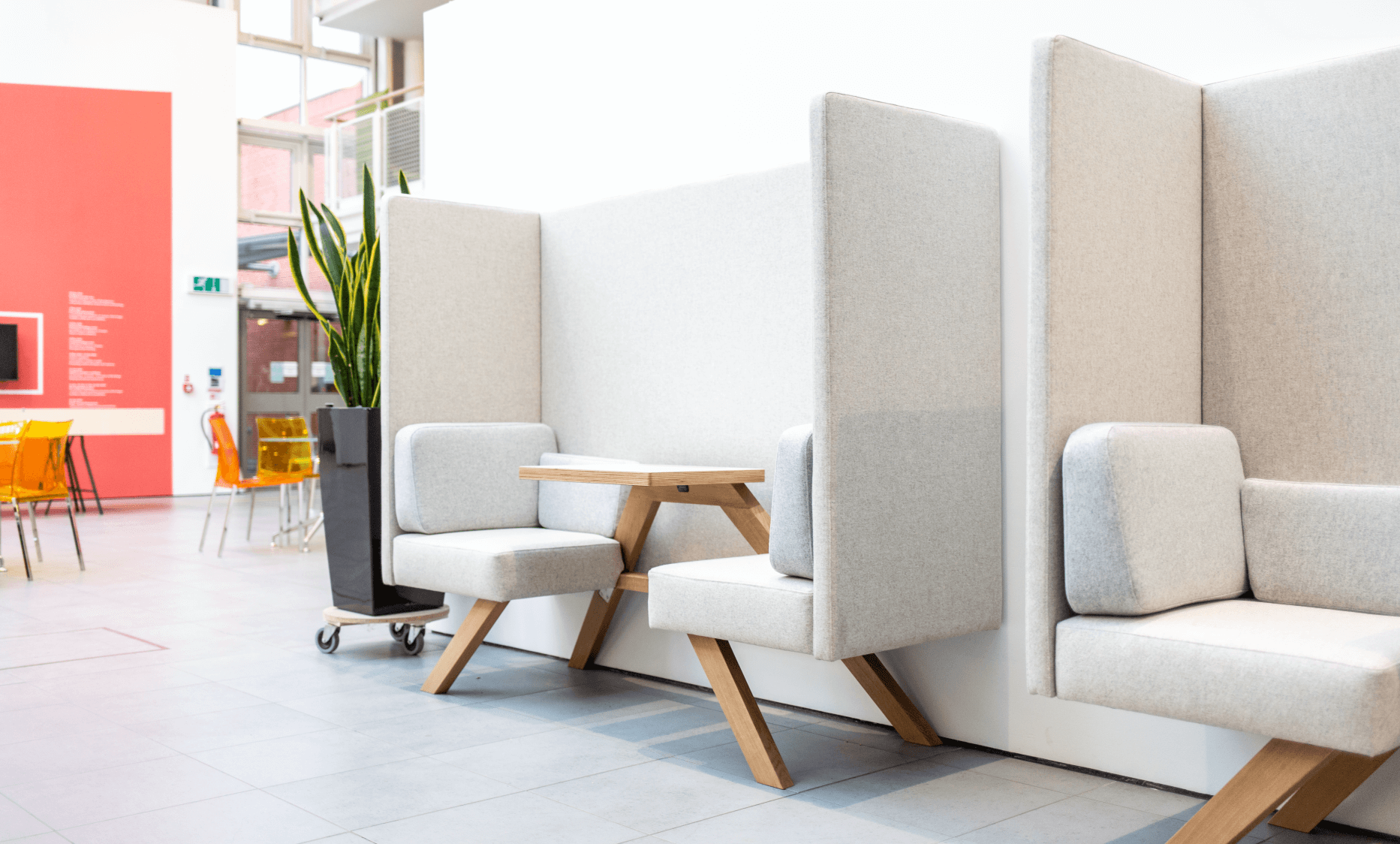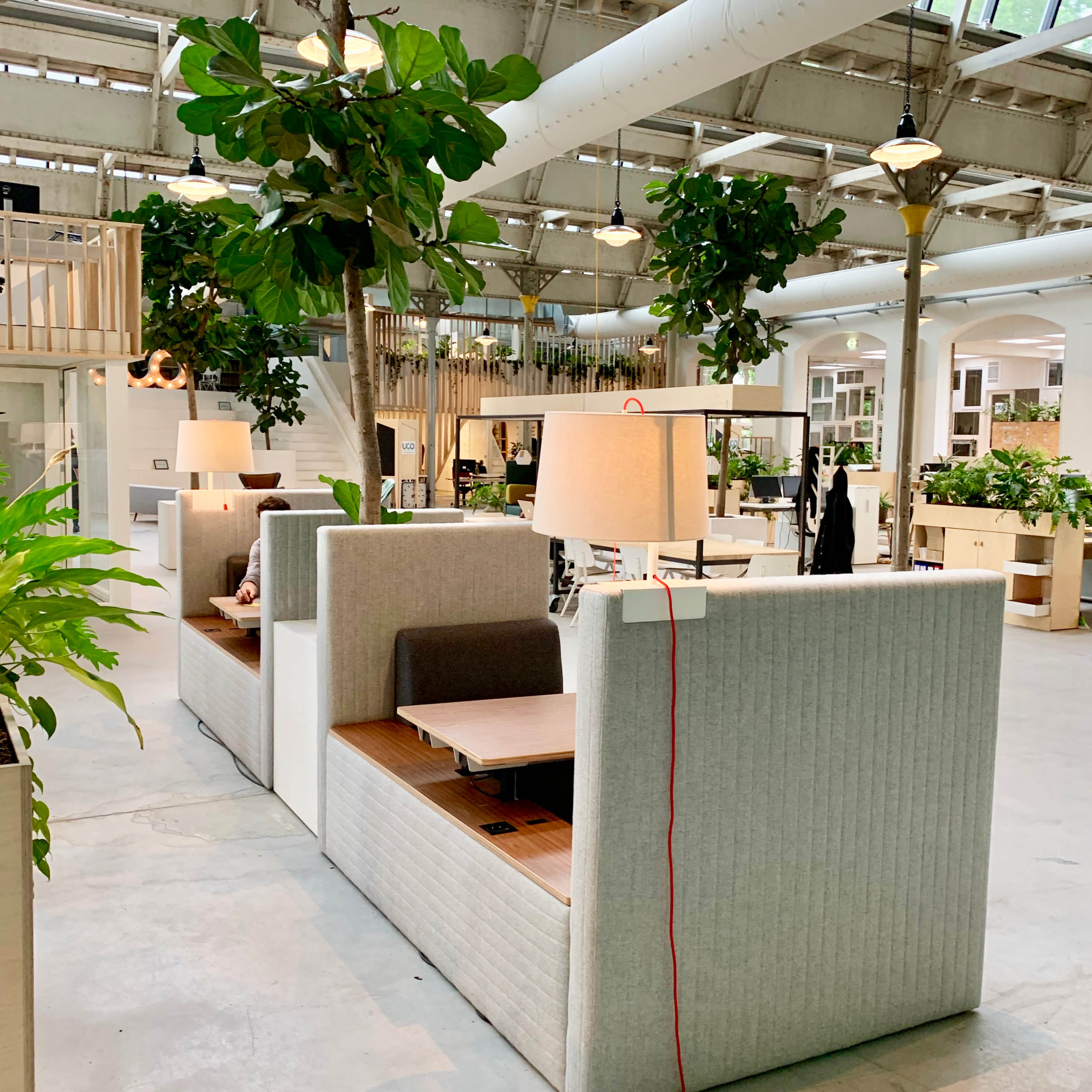Biophilic design is incredibly popular amongst the design community, however it’s a phrase often mistaken for simply meaning plants. The concept of biophilia is much more meaningful than that – it’s our innate connection to nature, connecting people with organic environments and materials that you’d find outside. Of course. plants play a part in that, but it’s not the only solution.
Here we’re looking at 5 ways to introduce biophilic design in the workplace (don’t worry, number 5 is still about using plants!).
1. Colour.
If you’re close to a window – hopefully not surrounded by an urban landscape – then what natural colours can you see? These are the tones to implement inside an office if you’re looking to introduce biophilic design in the workplace. In nature, apart from a few specific plants or foods, you’re less likely to find synthetic-looking colours so avoid garish or fluorescent yellows, purples, greens and reds. Biophilic design is something altogether softer.
Think instead of earthy browns from tree bark, muted beige from sand dunes or eggshells, soft orange colours inspired by fire or honey, soft purples from slate or lavender, blush pinks from blossoms or sunsets, pebble greys, and of course, summer sky blues and spring field greens.

2. Daylight, scent and air.
When you’re standing outside, your surroundings are rarely still. There’s a small breeze, sunlight, and the smell of fresh air. To emulate nature, think of biophilic design as a multisensory experience.
Enabling as much natural daylight as possible into a space is a sure-fire way to introduce biophilic design in the workplace. In a study conducted by Human Spaces, the most wanted natural element in an office was natural light (44%) which was closely followed by indoor plants (at 20%). If floor-to-ceiling windows aren’t an option, then certainly try not to block windows or prevent natural light from seeping through. Thin blinds can create a bright space but prevent glare across computer screens. What are the most pleasant smells in nature? Freshly cut grass, salty sea air, citrus fruit like lemons or grapefruit; all of these can be incorporated with your biophilic designs by using naturally scented room diffusers.
And finally clean, fresh, air, is more important than ever since the pandemic. If the windows can’t be open, and the air conditioning is static, then a small delicate fan can imitate the movement of the wind. A fan placed near draped materials will create that subtle movement found in nature when the breeze rustles leaves.

3. Imagery.
Another way to introduce biophilic design in the workspace is to literally show it. This can be done in a myriad of ways, through pictures or murals on the wall (or go one step further and use acoustic art on the walls that acts sound absorption too), to patterned carpet that looks like moss or lichen or even artificial grass for breakout areas.
There are plenty of ways to include biophilic design in the workplace through accent items, such as lampshades adorned with waves, sofa cushions depicting flowers, or use branches, pinecones, and pebbles to create natural décor. In fact, in healthcare environments, post-operative recovery times can be reduced by 8.5% and pain-reduction medication lowered by 22%, simply by having biophilic imagery close by (stats from Plant Plan).
4. Texture.
Running through grass barefeet, the feel of the ocean on our skin, or the gritty feel of sand from building sandcastle – but how on earth do you recreate this in a professional workspace? For starters, natural environments are not smooth. The beauty of nature is that it’s textured, raw, and 3 dimensional.
When considering materials, use organic materials that are nice to the touch: cotton, wool, bamboo, silk, hemp, straw, leather, or (faux) animal skins. Introduce wood or stone cladding, with gaps or a variety of heights between, to offer interest on walls. Water features, whilst you may be frowned upon running your fingers through them, can at least offer the textured sound of nature. Natural prints such as leaves can also add visual texture to otherwise flat surfaces.

5. Plants.
And of course, the easiest way to introduce biophilic design in the workplace is through the greenery. You can use real or fake – although there are additional benefits of using real plants such as increased oxygen in the space, as well as additional soundproofing qualities – in a variety of ways.
Potted plants, moss walls, green plant room dividers, vertical gardens, and even kitchen hydroponics to grow your own salad will add a fresh leafy visual to the workspace. If you don’t have that much space, then even small succulents added to desks and windowsills can bring life to an interior space.

When being asked to introduce biophilic design in the workspace, there really are so many ways to do this before you even place your first snake plant on a desk. All it takes is a little exploration into natural colours, sense from outside, the right images, textures, and of course some trusted green plants.
For further insight on creating a workspace for employees to thrive in, you might enjoy reading this blog exploring sustainable furniture.

